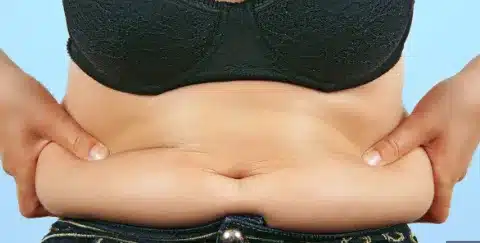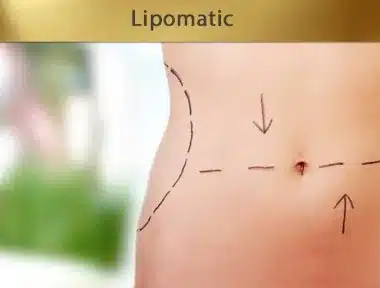If Lipomatic becomes painful, effective management strategies are essential to alleviate discomfort and ensure a smooth recovery. Consulting your surgeon promptly is paramount, as they can provide tailored solutions and guidance for managing discomfort effectively. From adjusting pain management medications to exploring alternative techniques, your surgeon plays a crucial role in addressing any discomfort experienced during the Lipomatic procedure.
When Does Lipomatic Become Painful?
Lipomatic is a popular cosmetic procedure involving advanced technology to remove excess fat from specific body areas. While it is generally considered safe and effective, there are instances where patients may experience pain during or after the procedure. This article will explore when Lipomatic becomes painful, its reasons, and what can be done to alleviate the discomfort.
Lipomatic surgery, synonymous with liposuction, revolutionizes body contouring through targeted fat removal techniques. By employing advanced liposculpture methods, this procedure precisely sculpts and reshapes the body, enhancing its contours and proportions. Renowned for its effectiveness, Lipomatic surgery offers individuals a transformative solution for achieving their desired aesthetic goals.
Lipomatic can become painful during or after the procedure. The degree of pain experienced can vary from person to person, ranging from mild discomfort to more intense sensations. Pain during Lipomatic is usually reported during the infiltration of local anesthesia or when the cannula is inserted into the targeted area. Post-procedure pain can occur due to tissue trauma and the body’s natural healing process.
what causes lipomatic to become painful
Several factors can contribute to the pain experienced during or after Lipomatic:
Infiltration of local anesthesia
one of the reasons that Lipomatic Becomes Painful. You can
The initial step of the Lipomatic procedure involves infiltrating local anesthesia into the treatment area. The injections themselves can cause temporary discomfort or a stinging sensation.
Cannula insertion
Lipomatic employs a thin tube to extract fat cells from the body. The cannula insertion may cause discomfort or pain, mainly if the area is sensitive or the patient has a low pain threshold.
Tissue trauma
Lipomatic involves breaking down fat cells and extracting them from the body, which can result in tissue trauma. This trauma triggers an inflammatory response, leading to pain and soreness as the body heals.
Individual pain tolerance
Each person’s pain tolerance varies; some individuals may naturally be more sensitive to pain than others. Anxiety, stress, and pre-existing medical conditions can also influence pain perception.

What Should You Do if Lipomatic Becomes Painful?
If you experience pain during or after Lipomatic, there are several steps you can take to alleviate the discomfort:
- Communication: if Lipomatic Becomes Painful you can Inform your aesthetic professional or surgeon about the pain you are experiencing. They can assess the situation, provide guidance, and address any concerns you may have.
- Pain management: Your healthcare provider may recommend over-the-counter pain relievers such as acetaminophen or non-steroidal anti-inflammatory drugs (NSAIDs) to help manage the pain. However, it is essential to follow their instructions and avoid self-medication.
- Cold compress: if Lipomatic Becomes Painful you can applying a cold compress to the affected area can help reduce inflammation and numb the area, providing temporary relief from pain and swelling.
- Rest and recovery: if Lipomatic Becomes Painful you can Give your body ample time to heal by resting and avoiding strenuous activities that could exacerbate the pain. Follow your healthcare provider’s post-operative instructions regarding rest, movement, and necessary precautions.
Lipomatic, where more adipose tissue can be removed compared to classical liposuction operations, does not harm the skin after liposuction aesthetics.Esteaura
Risks of lipomatic
- Infection: Any surgical procedure carries a risk of infection. While surgeons take measures to minimize this risk, the infection can still occur at the incision sites.
- Bleeding: Lipomatic surgery involves using cannulas to extract fat cells, which can result in bleeding. In some cases, excessive bleeding may occur, leading to complications that require further medical attention.
- Bruising and Swelling: Patients can experience bruising and swelling in the treated areas after the procedure. While this is a normal part of the healing process, it can be uncomfortable and may take some time to resolve completely.
- Numbness or Altered Sensation: Some individuals may experience temporary or permanent changes in sensation, such as numbness or altered sensitivity, in the treated areas. This is generally a temporary side effect, but it may be permanent in rare cases.
- Skin Irregularities: In some cases, Lipomatic surgery can result in uneven or irregular skin contours in the treated areas. This may include dimpling or sagging, although skilled surgeons aim to minimize such outcomes.
- Fluid Accumulation: Sometimes, fluid may accumulate in the treated areas, leading to a condition known as seroma. This can cause discomfort and may require drainage to resolve.
- Scarring: While the incisions made during Lipomatic surgery are relatively small, they can still result in some scarring. Surgeons strive to place incisions discreetly to minimize visible scarring.
- Anesthesia-related Risks: Lipomatic surgery usually involves local or general anesthesia. There are inherent risks associated with anesthesia, including allergic reactions or adverse effects.
- Blood Clots: In rare cases, blood clots can form in the veins, potentially dangerous if they travel to other body parts.
- Asymmetry: Achieving perfect symmetry can be challenging, and slight differences in the appearance of the treated areas may exist.
After the lipomatic procedure, it is common to experience pain, swelling, and bruising in the treated area. The intensity and duration of pain can vary depending on factors such as individual pain tolerance, the extent of the procedure, and the body’s natural healing response.
Your surgeon will provide instructions on managing pain and may prescribe pain medication or recommend over-the-counter pain relievers.

Perspectives from Prominent Hospitals and Recent Research
As the art and science of lipomatic surgery advance, prominent figures like Dr. Sherrell Aston from New York University and Dr. Rod Rohrich from the University of Texas Southwestern Medical Center have delved into the complexities surrounding pain management in these procedures. Their pioneering research has uncovered the intricate interplay of nerve sensitivity, tissue trauma, and inflammatory responses that can lead to discomfort during and after lipomatic surgery. Collaborative efforts with leading institutions like Johns Hopkins University and Stanford University have furthered our understanding of pain perception in lipomatic procedures, paving the way for innovative approaches to enhance patient comfort and satisfaction.
In the bustling landscape of cosmetic surgery, companies like Sono Bello have emerged as pioneers in lipomatic procedures, offering state-of-the-art facilities and cutting-edge techniques to address patient needs. With a focus on patient-centric care and continuous innovation, Sono Bello has become one of the most active players in the field, driving advancements in pain management strategies and setting new standards for excellence. Recent statistics from industry reports indicate a rising trend in the demand for lipomatic surgeries, with a significant portion of patients seeking solutions for stubborn fat deposits and body contouring goals.
These figures underscore the importance of ongoing research and collaboration in addressing the challenges of pain perception in lipomatic procedures, ultimately enhancing the overall patient experience.
Follow-up in Lipomatic
Follow-up care is essential in lipomatic procedures to ensure optimal healing and long-term satisfaction with the results. After undergoing lipomatic surgery, patients typically have scheduled follow-up appointments with their surgeon to monitor their progress and address any concerns. During these follow-up visits, the surgeon evaluates the healing process, checks for any signs of infection or complications, and provides guidance on post-operative care. Additionally, follow-up appointments allow patients to discuss their recovery experience, ask questions, and receive further instructions on activities, medications, and skincare routines.
In lipomatic procedures, follow-up care also involves monitoring for any changes in sensation, bruising, or swelling in the treated areas. The surgeon may recommend specific measures to manage these symptoms and promote optimal healing, such as gentle massage techniques, wearing compression garments, or using topical treatments. Moreover, follow-up appointments serve as an opportunity for the surgeon to assess the aesthetic outcomes of the lipomatic procedure and address any concerns or areas of dissatisfaction. By prioritizing follow-up care, patients can ensure that their recovery progresses smoothly and achieve the desired results from their lipomatic surgery.
post-operative care
Post-operative care is a critical aspect of the recovery process following lipomatic surgery. This comprehensive care regimen encompasses various measures aimed at promoting healing, minimizing discomfort, and optimizing outcomes. Immediately after the procedure, patients are typically provided with detailed instructions by their surgeon regarding wound care, activity restrictions, and pain management techniques.
Key components of post-operative care include:
1. Wound Care: Patients are instructed on how to properly care for their incision sites, which may involve keeping the area clean, applying prescribed ointments or dressings, and monitoring for signs of infection.
2. Pain Management: Pain and discomfort are common after lipomatic surgery, and patients may be prescribed pain medications or instructed to use over-the-counter pain relievers as needed.
3. Activity Restrictions: Patients are advised to avoid strenuous activities, heavy lifting, and vigorous exercise during the initial recovery period to prevent complications and promote healing.
4. Compression Garments: Wearing compression garments as recommended by the surgeon helps reduce swelling, promote circulation, and support the treated areas during the healing process.
5. Follow-up Appointments: Regular follow-up appointments with the surgeon are scheduled to monitor progress, address any concerns, and assess the outcomes of the procedure.
By adhering to the post-operative care plan provided by their surgeon, patients can facilitate a smoother recovery and achieve optimal results from their lipomatic surgery.
Conclusion
In conclusion, when facing discomfort or pain after a Lipomatic procedure, prompt and proactive management is key to ensuring a comfortable recovery. Consulting with your surgeon to discuss any discomfort experienced is crucial, as they can provide personalized management strategies tailored to your specific needs. Utilizing techniques such as applying ice packs to reduce inflammation, managing numbness and sensitivity, and adjusting pain management medications can effectively alleviate discomfort and support a smoother recovery process. By actively addressing discomfort and implementing appropriate management strategies, individuals undergoing Lipomatic procedures can enhance their overall comfort and satisfaction throughout the recovery journey.
FAQ
Q1: Is Lipomatic a painful procedure? A1: Lipomatic can cause discomfort or pain during or after the procedure. However, pain levels vary between individuals, and some may experience only mild discomfort.
Q2: How long does the pain after Lipomatic last? A2: The duration of pain after Lipomatic varies depending on individual healing and pain tolerance. Any discomfort or soreness should diminish within a few days to a couple of weeks.
Q3: Are there any long-term consequences of experiencing pain during Lipomatic? A3: In most cases, experiencing pain during Lipomatic does not result in long-term consequences. However, if you have concerns or the pain persists or worsens, you must consult your healthcare provider for a proper evaluation.
Q4: Why has my lipomatic procedure become painful? A: Pain after a lipomatic procedure can occur due to various reasons, including inflammation, bruising, or nerve irritation. It’s normal to experience some discomfort during the initial recovery period. However, if the pain becomes severe or persists beyond the expected timeframe, it’s essential to contact your surgeon for evaluation and guidance.
Q5: What can I do to alleviate the pain after lipomatic surgery? A: To manage pain after lipomatic surgery, follow your surgeon’s post-operative instructions carefully. This may include taking prescribed pain medications, applying ice packs to the affected area, and avoiding strenuous activities. Additionally, wearing compression garments as recommended by your surgeon can help reduce swelling and discomfort. If the pain persists or worsens, consult with your surgeon for further assessment and potential treatment options.
Lipomatic Turkey – Fat Removal with Lipomatic – Esteaura



